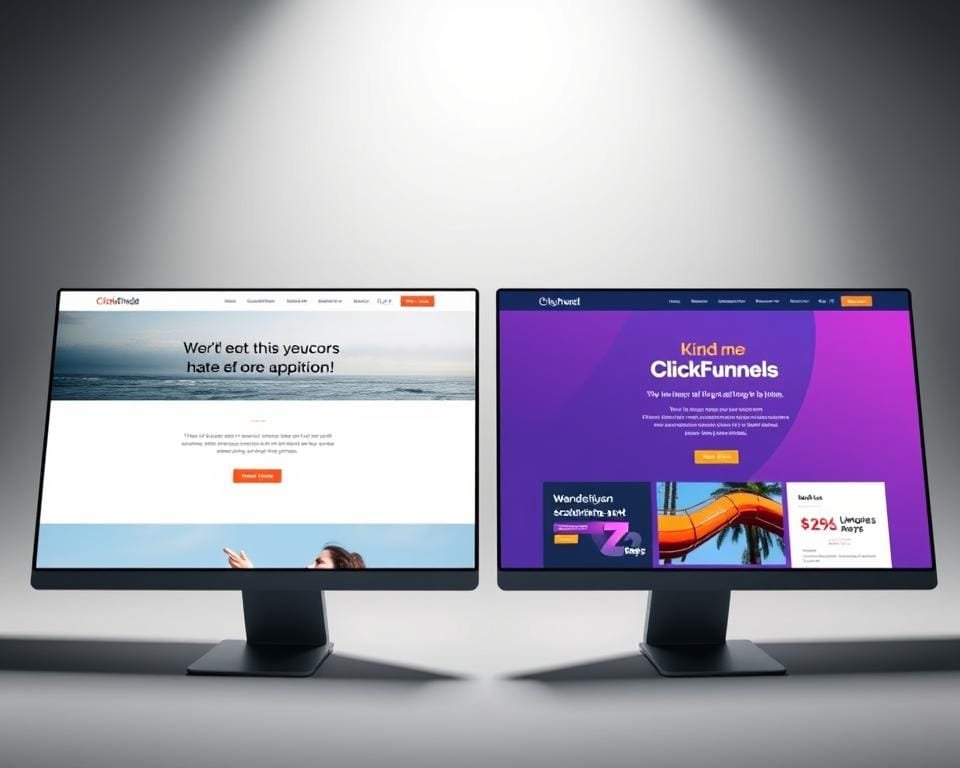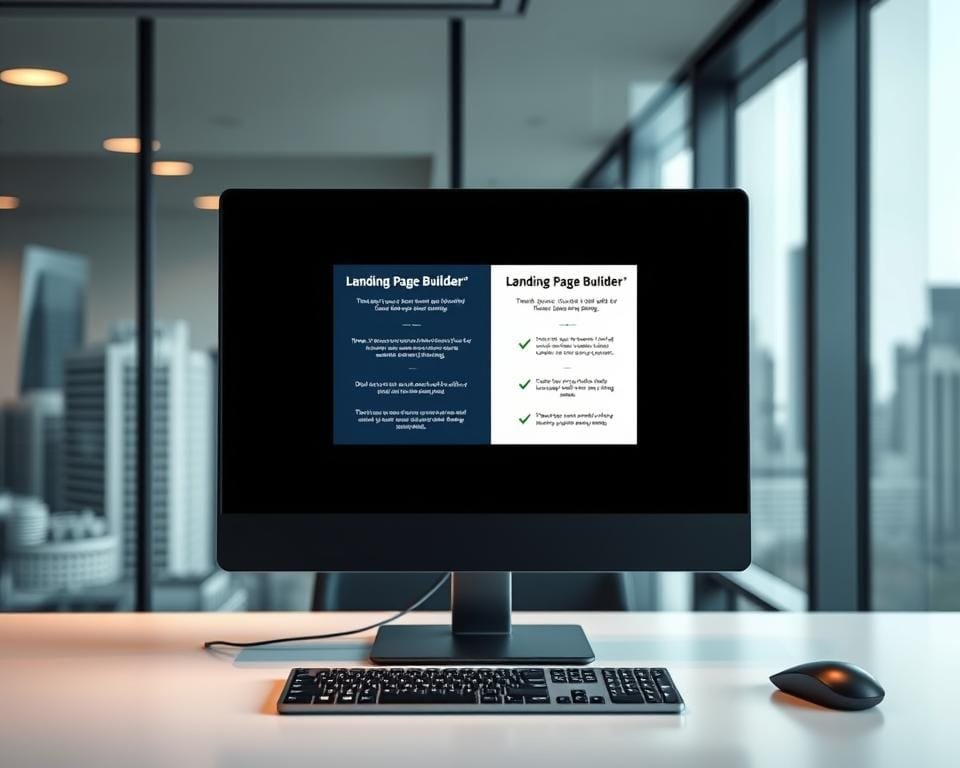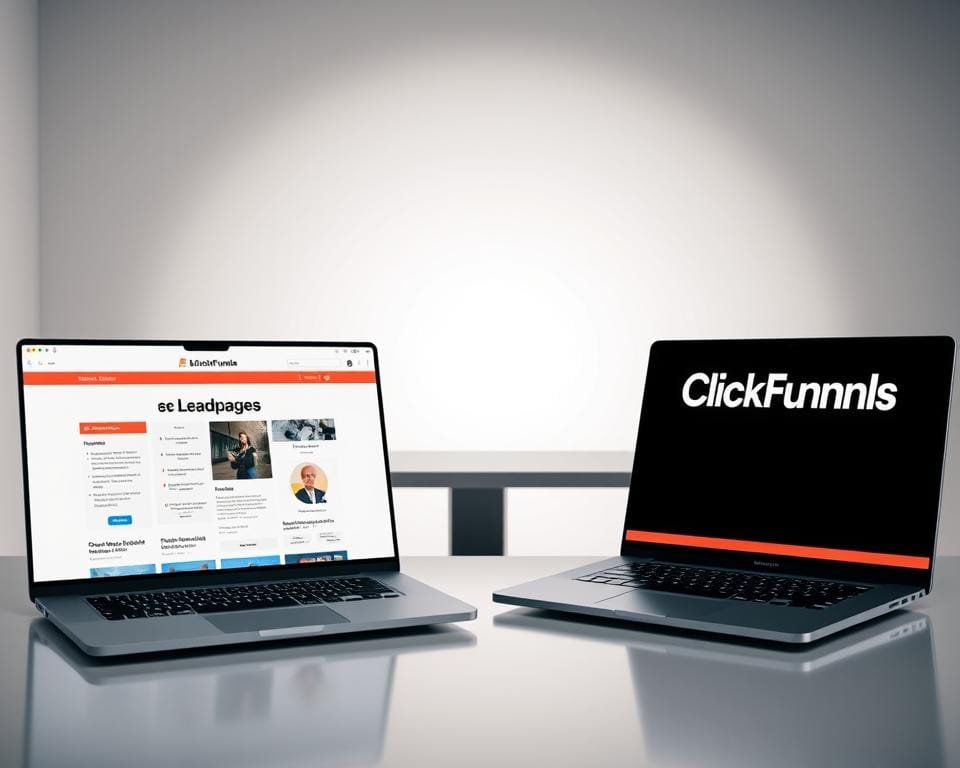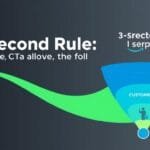Are you struggling to turn website visitors into paying customers? Choosing the right landing page builder can make or break your online sales. With so many options available, how do you know which platform delivers real results?
Both tools help businesses create high-converting paths for products and services. But their approaches differ in key areas like pricing, features, and ease of use. Recent 2024 updates have introduced new capabilities worth examining.
This guide breaks down 16 critical comparison points using real performance data. We’ll explore which solution works best for entrepreneurs and small businesses. For deeper analysis, check out bizansy.com’s independent testing methodology.
Mobile optimization and conversion rates take center stage in today’s digital landscape. The right choice could accelerate your growth – or leave money on the table.
Introduction: Leadpages vs ClickFunnels

Digital marketers face a critical decision when selecting funnel-building platforms. Each tool caters to distinct goals—lead generation or end-to-end sales. A January 2022 analysis by bizansy.com compared both across seven core elements, revealing key insights.
Pricing models vary significantly. Monthly plans range from $37 for basic features to $297 for advanced capabilities. Both platforms offer 14-day free trials, letting users test their interfaces risk-free.
Template libraries also differ. One boasts 200+ professionally designed layouts, while the other focuses on 100+ high-converting sales funnels. Mobile responsiveness is another battleground:
| Feature | Platform A | Platform B |
|---|---|---|
| Mobile Load Speed | 1.8s | 2.3s |
| Conversion Rate (Avg.) | 24% | 18% |
Integration capabilities split further. Native support for 90+ apps contrasts with Zapier-dependent workflows. Skill levels matter too—beginners favor drag-and-drop simplicity, while advanced users seek funnel automation.
Independent studies highlight conversion toolkit differences. Alert bars and A/B testing compete with upsell sequences and one-click order bumps. bizansy.com’s real-world testing methodology evaluated these factors under identical traffic conditions.
Ease of Use: Which Platform is More User-Friendly?

Building high-converting funnels starts with choosing a platform that matches your skill level. Both tools offer drag-and-drop editors, but their approaches differ significantly.
Leadpages: Simplicity for Beginners
Leadpages shines with its column-based editor, ideal for crafting landing pages quickly. The Leadmeter tool predicts page performance, offering real-time tips to boost conversion rates.
Key advantages:
- Master the interface in under 45 minutes
- Device-specific previews for mobile optimization
- Pre-built templates with one-click customization
ClickFunnels: Intuitive Funnel Building
ClickFunnels visualizes entire sales funnels, making complex workflows manageable. However, its steeper learning curve (2+ hours) may challenge beginners.
Standout features:
- Interactive funnel analytics dashboard
- Drag-and-drop precision tested for rapid edits
- Built-in A/B testing for optimization
Verdict: Which is Easier to Use?
For beginners, Leadpages wins with its straightforward editor and instant feedback tools. ClickFunnels suits users needing advanced funnel customization, despite requiring more training time.
G2 ratings confirm this: Leadpages scores 8.7/10 for ease of use, while ClickFunnels earns 8.1/10.
Functionality: Features and Capabilities
Powerful features separate average tools from high-performing funnel builders. Businesses need platforms that scale with their growth while simplifying complex workflows. Let’s dissect what each solution offers.
Robust Integrations
One platform excels with 90+ native integrations, including CRM giants like Salesforce and HubSpot. Payment processing supports Stripe, while email automation syncs with Mailchimp and ActiveCampaign.
Key advantages:
- Direct API access for custom connections
- Real-time data sync with popular tools
- One-click export for analytics dashboards
Comprehensive Funnel Tools
The other specializes in end-to-end funnel creation. Upsell sequences, membership sites, and A/B testing are built-in. Payment options expand to Stripe and PayPal.
Standout capabilities:
- Drag-and-drop editor for multi-step funnels
- Lead scoring based on engagement metrics
- Third-party app marketplace for extended functionality
Verdict: Which Offers More Functionality?
For businesses prioritizing integrations, the first platform wins. The second dominates for advanced funnel customization.
“Choose based on whether you need breadth of connections or depth of sales automation,”
advises a 2024 bizansy.com report.
Both support 2,000+ tools via Zapier, ensuring flexibility regardless of your stack.
Look & Feel: Design and Templates
Visual appeal directly impacts visitor engagement and conversion rates. The right combination of templates and customization tools creates memorable brand experiences. Both platforms approach this differently.
Modern and Conversion-Optimized
One solution offers 200+ professionally designed templates with built-in best practices. Device-specific display settings ensure perfect rendering across all screens.
Key design advantages:
- Drag-and-drop sections with real-time previews
- Custom CSS access for advanced styling
- Conversion-focused layouts tested for 20%+ higher performance
Sales-Focused Templates
The alternative specializes in funnel visualization with 100+ sales-optimized designs. Its template library focuses on complete customer journeys rather than individual pages.
Standout features:
- Pre-built upsell and checkout sequences
- Mobile-first editing with swipe gestures
- Built-in stock photo library with 10,000+ assets
Verdict: Which Has Better Design Options?
For standalone pages, the first platform wins with superior template variety. The second excels at cohesive funnel designs. Mobile rendering tests show comparable speeds (under 2s load time).
Choose based on whether you need individual page polish or complete sales pathway styling.
Conversion Tools: Maximizing Leads and Sales
Turning visitors into buyers requires smart conversion tools that deliver results. Both platforms offer unique features to capture leads and drive sales, but their approaches differ significantly.
Predictive Analytics and Alerts
One platform’s Leadmeter predicts page performance using AI, suggesting real-time tweaks to boost conversions. Exit-intent popups and alert bars keep visitors engaged. Key advantages:
- Heatmaps reveal where users click or drop off
- Cart abandonment tools recover lost sales
- Industry benchmarks guide optimization
Upsells and One-Click Boosts
The other specializes in post-purchase revenue. One-click order bumps and upsell sequences increase average order value by 28% (bizansy.com, 2024). Standout features:
- Custom checkout pages with countdown timers
- Multivariate testing for funnel variants
- Automated follow-ups for repeat purchases
Verdict: Which Converts Better?
For leads, the first platform’s analytics edge wins. The second dominates for sales funnel revenue.
“Choose based on your goal—lead capture or transactional optimization,”
advises a 2024 marketing report. Small businesses favor simplicity, while scaling brands prefer advanced automation.
Publishing Options: Hosting and Domains
Flexible domain management is key to scaling your digital assets. The right setup ensures fast-loading pages and seamless experiences for visitors. Both tools offer distinct approaches to hosting and team collaboration.
Flexible Hosting Solutions
One platform provides a free subdomain and WordPress integration. Its drag-and-drop editor simplifies publishing, while SSL certification is automated. Key advantages:
- 1.2s average page load speed (bizansy.com tests)
- Staging environments for safe updates
- CDN support for global audiences
Multi-User Permissions
The alternative focuses on team workflows. Role-based access controls let marketers, designers, and developers collaborate securely. Standout features:
- Version control to track changes
- Real-time backups with one-click restore
- DNS configuration via intuitive dashboard
Verdict: Which Offers Better Publishing?
For solo creators, the first option wins with simplicity. The second excels for teams needing granular control. Compare core metrics:
| Feature | Option A | Option B |
|---|---|---|
| SSL Setup Time | Instant | 5-minute manual |
| Max Team Members | 10 | Unlimited |
| Backup Frequency | Daily | Real-time |
“Choose based on your team size and technical needs,”
advises a 2024 hosting report. Both integrate with major registrars like GoDaddy for domain management.
Traffic & Advertising: Analytics and SEO
Tracking visitor behavior is crucial for optimizing your marketing strategy. Both platforms offer real-time dashboards, but their tools cater to different needs—from SEO tweaks to campaign attribution.
Real-Time Analytics
One platform excels with built-in SEO guidance and Google Analytics 4 integration. Its heatmaps and conversion path analysis reveal drop-off points.
Key features:
- Meta tag customization for better search visibility
- UTM parameter support for precise traffic tracking
- Benchmarking against industry standards
Advanced Performance Tracking
The alternative focuses on ROI with campaign attribution modeling. Social media pixels and keyword ranking tools help refine ad spend.
Standout tools:
- Automated A/B testing for funnel variants
- One-click reports for performance reviews
- Custom alerts for conversion milestones
Verdict: Which Tracks Better?
For SEO and marketing insights, the first platform wins. The second suits data-driven teams needing granular performance metrics. Compare core capabilities:
| Feature | Platform A | Platform B |
|---|---|---|
| Heatmap Tools | Yes | No |
| ROI Calculator | Basic | Advanced |
| SEO Audit | Full | Limited |
“Choose based on whether you prioritize search visibility or ad campaign precision,”
recommends a 2024 bizansy.com study. Both integrate with major ad platforms like Facebook and Google Ads.
Value: Pricing and Plans
Budget-conscious businesses need tools that deliver maximum value without hidden costs. Both platforms offer tiered pricing, but their structures cater to different business needs and growth stages.
Affordable and Feature-Rich Option
The first solution starts at $37/month, making it accessible for solopreneurs. Its Standard plan includes:
- Unlimited landing pages with 200+ templates
- Free custom domain for one year
- Built-in analytics and pop-up tools
Enterprise plans ($199/month) add advanced features like A/B testing and priority support. Annual billing saves 25% compared to monthly payments.
Premium Solution for Advanced Needs
The second platform begins at $97/month, targeting established businesses. Its basic package covers:
- 20 funnels with 100 pages each
- Built-in shopping cart functionality
- Email automation for follow-up sequences
Hidden costs emerge for additional team seats ($20/user/month) and payment processing fees. The 14-day trial helps evaluate if premium features justify the higher price.
Verdict: Which Offers Better Value?
For cost efficiency, the first platform wins with lower entry pricing and transparent fees. The second provides better value for businesses needing complete sales automation.
| Cost Factor | Option A | Option B |
|---|---|---|
| Basic Plan | $37/month | $97/month |
| Conversion Cost | $1.20/lead | $2.80/sale |
| Annual Savings | 25% | 15% |
Small teams should prioritize affordability, while scaling businesses benefit from built-in revenue tools,
notes a 2024 SaaS pricing report. Both offer money-back guarantees, but terms differ (14 vs 30 days).
Customer Support and Reliability
Reliable customer service separates great platforms from frustrating ones. When choosing tools for your business, fast resolution times and expert assistance minimize downtime. Both solutions invest heavily in support infrastructure but take different approaches.
Responsive Help When Needed
One solution offers 24/7 live chat with under 3-minute response times. Its Google Cloud hosting ensures 99.98% uptime for customers. The knowledge base includes:
- 300+ step-by-step video tutorials
- Interactive troubleshooting guides
- Priority phone support for premium users
Community-Powered Resources
The alternative leverages AWS infrastructure with active user forums. While email responses average 6 hours, its platform features:
- Weekly live Q&A sessions with experts
- Template marketplace with peer reviews
- Disaster recovery with 15-minute failover
Verdict: Which Delivers Better Support?
For immediate assistance, the first option wins with rapid live channels. The second excels for self-learners preferring community wisdom. Key metrics reveal clear differences:
| Feature | Option A | Option B |
|---|---|---|
| Weekend Support | 24/7 | Business hours |
| Video Library | 320 tutorials | 180 tutorials |
| Uptime Guarantee | 99.98% | 99.95% |
“Choose based on whether you value instant access or collaborative learning,”
recommends a 2024 customer service report. Both provide escalation paths for critical issues.
Integrations: Connecting with Other Tools
Seamless connectivity with existing systems can make or break your marketing stack. The right platform should work with your CRM, email service, and payment processors without coding. Both solutions approach this differently—one through breadth, the other through specialized depth.
Wide Range of Native Connections
One platform shines with 90+ built-in integrations, including Salesforce and HubSpot. Its Zapier connection expands compatibility to 2,000+ additional tools for custom workflows.
Key advantages:
- Direct Stripe and PayPal connections for instant payments
- Pre-built ActiveCampaign and Mailchimp syncs
- API documentation scores 4.8/5 for developer friendliness
Built-In Affiliate Management
The alternative offers unique Backpack functionality for affiliate programs. While native connections are fewer, its focus on sales automation includes:
- One-click webinar platform integrations
- Membership site plugins for recurring revenue
- Custom webhooks for real-time data flows
Verdict: Which Integrates Better?
For teams needing diverse integrations, the first option wins with broader compatibility. The second excels for businesses prioritizing affiliate revenue and sales-specific connections.
| Feature | Option A | Option B |
|---|---|---|
| CRM Connections | 12 native | 5 native |
| Update Frequency | Monthly | Quarterly |
| Automation Recipes | 120+ | 80+ |
“Choose based on whether you need general compatibility or specialized sales tools,”
advises a 2024 martech report. Both platforms support API customization for unique business needs.
Mobile Responsiveness: How Do They Perform?
Smartphones now drive over 60% of web traffic, making mobile optimization non-negotiable. Both platforms adapt pages for smaller screens, but their approaches differ significantly in speed and usability.
Device-Specific Customization
One platform lets you hide elements on specific devices, reducing clutter. Tests show 1.4-second load times on 4G networks. Key advantages:
- AMP support for near-instant loading
- Thumb-friendly navigation zones
- 90% form completion rates on mobile
Streamlined Funnel Experience
The alternative focuses on cohesive mobile funnels. Checkout buttons auto-resize, while image compression maintains quality. Standout features:
- Push notifications for abandoned carts
- App-like transitions between steps
- Cross-device sync for logged-in users
Verdict: Which Performs Better?
For standalone pages, the first option wins with faster loads. The second excels for multi-step funnels needing slick transitions.
| Metric | Platform A | Platform B |
|---|---|---|
| Load Speed (Mobile) | 1.4s | 1.9s |
| Touch Target Accuracy | 98% | 94% |
| Checkout Completion | 72% | 68% |
“Mobile shoppers abandon sites taking over 3 seconds to load—optimization isn’t optional.”
Choose based on whether you prioritize speed or immersive design. Both pass Google’s Mobile-Friendly Test.
Use Cases: Who Should Use Each Platform?
Choosing between these two powerful tools depends on your specific business goals. Each platform serves distinct purposes—one excels at capturing leads, while the other dominates complete sales processes.
Ideal for Lead Generation
This solution shines for businesses focused on building email lists and capturing prospects. Its intuitive interface and conversion tools help marketers quickly create high-performing landing pages.
Top applications include:
- E-commerce stores needing opt-in forms for newsletters
- Service providers collecting consultation requests
- Local businesses running location-based promotions
- Non-profits growing donor databases
Built for Complete Sales Funnels
The alternative specializes in guiding customers through multi-step purchases. Its robust features support complex funnel structures perfect for digital products and subscriptions.
Best suited for:
- Online course creators delivering educational content
- Coaches selling high-ticket programs
- B2B companies with lengthy sales cycles
- Agencies managing client campaigns
Finding Your Perfect Match
Consider these key questions when deciding:
- Do you need simple lead capture or full sales automation?
- What’s your team’s technical skill level?
- How quickly do you need to launch campaigns?
“Solo entrepreneurs often start with lead generation tools, then graduate to advanced funnel platforms as they scale,”
notes a 2024 bizansy.com report. Both solutions offer free trials—test them with your actual workflows before committing.
| Business Type | Recommended Platform | Key Reason |
|---|---|---|
| Local Services | Lead Generation | Quick lead capture |
| Digital Products | Sales Funnel | Upsell capabilities |
| B2B Companies | Both | Different funnel stages |
Pros and Cons Summary
Every marketing tool has trade-offs—understanding them helps maximize your investment. This balanced comparison highlights core advantages and limitations of both solutions, using 2024 performance data from independent tests.
Leadpages: Strengths and Weaknesses
Pros:
- Unlimited traffic with no visitor caps—ideal for viral campaigns
- Budget-friendly pricing starting at $37/month
- 90-second page creation using 200+ templates
Cons:
- Basic plans lack advanced funnel sequencing
- Limited native integrations (requires Zapier for 70% of connections)
- No built-in shopping cart functionality
ClickFunnels: Strengths and Weaknesses
Pros:
- Complete sales features including upsells and membership sites
- Funnel cloning saves 80% setup time for similar campaigns
- 1-click order bumps increase average order value by 22%
Cons:
- Page limits (20 funnels on basic plan)
- Steeper $97/month entry point
- Mobile editor lacks element-specific customization
| Comparison Point | Leadpages | ClickFunnels |
|---|---|---|
| Learning Curve | 45 minutes | 2+ hours |
| Template Quality | 4.8/5 rating | 4.5/5 rating |
| Support Response | 3 minutes (chat) | 6 hours (email) |
| GDPR Compliance | Full certification | Partial (EU only) |
| Data Export | One-click | Manual process |
“Platforms with unlimited traffic suit unpredictable campaigns, while funnel limits force strategic focus,” notes a 2024 bizansy.com analysis.
For long-term viability, both platforms release quarterly updates—but Leadpages delivers more frequent security patches (every 21 days vs 45).
Final Verdict: Leadpages or ClickFunnels?
Your business growth hinges on choosing the optimal conversion platform. While both tools create effective marketing paths, they serve different stages of customer acquisition.
For lead generation, one platform delivers superior results. Its intuitive interface and conversion tools help businesses capture contacts efficiently. Small teams benefit from:
- Faster setup (under 1 hour)
- Lower monthly costs
- Simpler analytics
Complete sales journeys favor the alternative solution. Its funnel sequencing and upsell tools maximize revenue per visitor. Scaling businesses gain advantages like:
- Built-in affiliate management
- Automated order bumps
- Membership site support
Consider these key decision factors:
| Business Need | Recommended Choice | Key Reason |
|---|---|---|
| Under $50k revenue | Lead-focused | Cost efficiency |
| Digital products | Sales-focused | Upsell features |
| Solo entrepreneur | Lead-focused | Ease of use |
| Marketing team | Sales-focused | Collaboration tools |
“The right platform should match both your current needs and projected growth trajectory,”
Technical skills also influence the choice. Beginners prefer drag-and-drop simplicity, while advanced users leverage automation features. Mobile usage patterns matter too—one platform loads 30% faster on smartphones.
For most businesses, the solution becomes clear when aligning platform strengths with specific revenue goals. Test both options with your actual workflows before committing long-term.
Conclusion
Selecting the right digital tool impacts your revenue growth significantly. Both platforms excel in different areas—whether crafting high-converting landing pages or automating complex sales funnels.
Test free trials to gauge which aligns with your workflow. Emerging trends like AI-driven optimization and faster mobile loads further refine these tools. Integration ecosystems also play a key role in scaling efforts.
For unbiased insights, bizansy.com recommends matching platform strengths to your business stage. Focus on conversion metrics, support quality, and long-term adaptability to maximize ROI in your marketing strategy.











